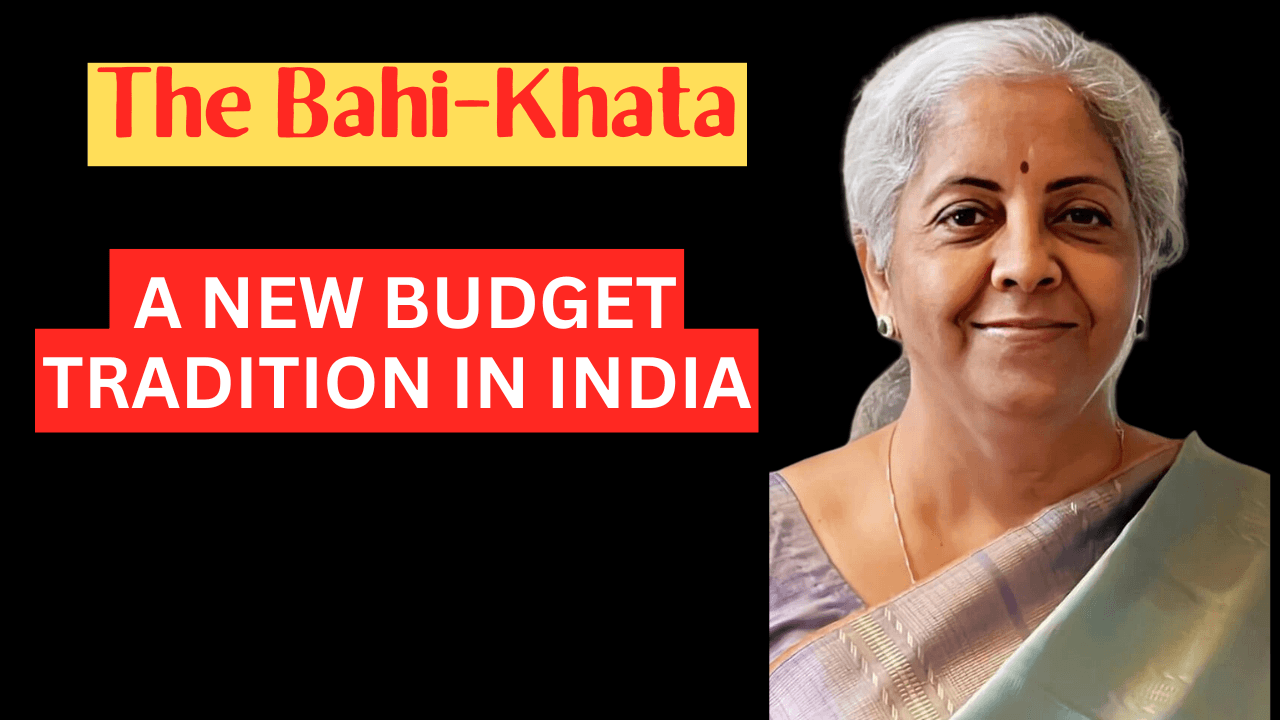The Bahi-Khata: A New Budget Tradition in India
The Bahi-Khata: A New Budget Tradition in India The Union Budget of India has always been a significant event that not only defines the financial roadmap of the country but also carries symbolic elements reflecting cultural and historical values. In 2019, a noteworthy shift occurred when the then Finance Minister, Nirmala Sitharaman, replaced the traditional briefcase with a red cloth ledger known as the “Bahi-Khata.” This transition marked the beginning of a new tradition that resonates deeply with India’s cultural roots.
What is a Bahi-Khata?
The term “Bahi-Khata” translates to “ledger book” in Hindi. It is a traditional accounting book that has been used by Indian traders and small business owners for centuries to maintain financial records. The Bahi-Khata: A New Budget Tradition in India The book, typically wrapped in a red cloth, symbolizes discipline, accountability, and a deep respect for the financial process. It has long been associated with Indian commerce, particularly among small businesses and shopkeepers.
The Shift from Briefcase to Bahi-Khata
Until 2018, the Union Budget was traditionally presented in a briefcase, a practice inherited from the British. The briefcase became a symbol of officialdom and formality, reflecting colonial influences. The Bahi-Khata: A New Budget Tradition in India However, in 2019, Finance Minister Nirmala Sitharaman broke this tradition by presenting the budget in a red Bahi-Khata.
The decision to switch was deliberate and symbolic. It signified India’s departure from colonial practices and embraced an identity rooted in Indian tradition and culture. The use of the Bahi-Khata aligns with the government’s broader emphasis on promoting Indian heritage and traditional practices.
Why is the Bahi-Khata Significant?
- Cultural Symbolism: The Bahi-Khata is a nod to India’s rich cultural heritage, emphasizing traditional practices in the modern financial ecosystem.
- Simplicity and Accountability: The Bahi-Khata: A New Budget Tradition in India Unlike the corporate-style briefcase, the Bahi-Khata signifies transparency and simplicity, values integral to India’s governance.
- Economic Inclusivity: It resonates with small business owners and traders who still use traditional accounting methods, making the budget relatable to grassroots levels.
- Breaking Colonial Legacy: By moving away from the briefcase, the government reinforces its focus on decolonizing institutional practices.
How the Bahi-Khata is Presented
The Bahi-Khata is a simple red cloth folder adorned with the Indian national emblem in gold. Inside, the budget documents are securely placed.The Bahi-Khata: A New Budget Tradition in India The Finance Minister carries it to Parliament, symbolizing respect and reverence for the nation’s financial plans. This visual representation contrasts sharply with the briefcase, which was seen as a relic of bureaucracy.
Public and Political Reactions
The introduction of the Bahi-Khata was met with widespread appreciation for its cultural significance. Many saw it as a refreshing change that brought a uniquely Indian identity to a global stage. However, critics argued that the change was more symbolic than substantive, pointing out that the mode of presentation does not affect the content or impact of the budget.
Broader Implications
The adoption of the Bahi-Khata is part of a larger trend where the government seeks to integrate Indian traditions into official practices. It reflects an effort to create a governance model that is not only efficient but also culturally resonant. By emphasizing symbols like the Bahi-Khata, the government underscores its commitment to preserving India’s heritage while modernizing its institutions.
Conclusion
The introduction of the Bahi-Khata in the Union Budget of 2019 marked a significant shift in how India’s financial plans are presented. The Bahi-Khata: A New Budget Tradition in India It represents a blend of tradition and modernity, symbolizing accountability, inclusivity, and respect for India’s cultural identity. While its impact may be largely symbolic, the Bahi-Khata serves as a reminder of the importance of cultural heritage in shaping national narratives.
As India continues to evolve as a global economic power, such traditions help preserve its unique identity and offer a sense of continuity with its rich historical past.
For More Information : https://taxgyany.com/

